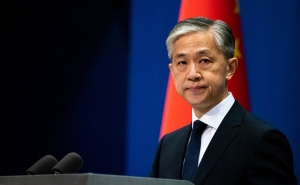India will become the world’s most populous country in 2023

The world will witness a symbolic demographic event in 2023, as India becomes the world’s most populous nation. According to the United Nations, India’s population will exceed that of China’s in April. The milestone isn’t significant in itself, but highlights the variance in demographic patterns between the world’s most populous two nations, India Briefing reports.
China, largely by virtue of its size, has been the world’s most populous nation – excluding empires – for three centuries. In the latter half of the 20th century, China’s population, like those in many developing countries, surged. But the introduction of the one-child policy in 1980 drastically changed the trajectory of China’s population growth.
This impact’s India in more ways than one. But chief among them is an end to China’s abundant and low-cost labor – the state is already experiencing shortages of manual labor and unskilled workers – and this incentivizes divestment into countries like India. India has more people of working age than any other population group, leading to what is a demographic dividend.
Evidence suggests that India is already benefitting from a shift in production away from China, due to the aforementioned abundance of labor, and concerns about Beijing’s control over policy direction as well as an uncertain geopolitical backdrop.
A demographic dividend is said to occur when the ratio of the working-age population is high and the dependency ratio with regards children and elderly people is low. There are several reasons this is deemed as a positive. Firstly, it creates an economic surplus and allows for reinvestment by the state. But the abundance of labor also attracts investment.
Data suggests that India could have a golden period between 2020 to 2040, if the demographic dividend is harnessed properly. This is the period during which the working-age ratio will peak. “Harnessing” is the key word here. India needs a healthy, educated, skilled, and willing economically active population.
This is where the state faces challenges. Around 90 percent of jobs in India are informal, meaning most of the population don’t have a regular salary – this can be particularly damaging when economic shocks, like that caused by Covid-19, take place.
Meanwhile, just 20 percent of women of working age are indeed working, reflecting concerns around the implementable skills within their education. Men, from the same education background, find it easier to get work in labor-intensive sectors, such as truck driving, electronic repair, or postal delivery workers.
Evidence also suggests that only around three percent of the workforce have formal training of any kind. This compounds widespread issues around health, including malnutrition and anemia, which means many people entering the workforce may have had impairments in their cognitive and physical development.
Foreign investment is also key to harnessing this demographic dividend. The government has pushed forward with its ‘Make in India’ initiative, which has seen some success. This includes Apple’s moves away from China to India. It was reported last week that Apple exported more than US$2.5 billion of iPhones from India in the months from April to December, nearly twice the previous fiscal year’s total.
In 2023, we can expect the central government to place increasing emphasis on addressing these factors impeding India from collecting its demographic dividend.
-
 17:08
17:08The regular session of the Anti-corruption Policy Council takes place in Jermuk
-
 15:05
15:05The Prime Minister sends congratulatory messages to the supreme leader of Iran and the President of Iran
-
 11:11
11:11Armenia sends earthquake aid to Turkey
-
 10:43
10:43Commemoration of the Pontiff St. Sahak Partev
-
 09:16
09:16Some roads are closed and difficult to pass in Armenia
-
 19:55
19:55Phone conversation of the Foreign Minister of Armenia with the U.S. Assistant Secretary of State for European and Eurasian Affairs
-
 18:30
18:30Prime Minister Pashinyan and President Khachaturyan meet
-
 18:20
18:20Ararat Mirzoyan with Co-Chairman of the OSCE Minsk Group of France Brice Roquefeuil
-
 17:01
17:01Humans could land on Mars within 10 years, Musk predicts
-
 16:45
16:45France, US urge 'immediate' end to Nagorno Karabakh blockade
-
 16:01
16:01Blockaded Nagorno Karabakh launches fundraiser to support quake-hit Syria
-
 15:59
15:59Earthquake death toll in Turkey rises to 18,342
-
 15:43
15:43Ararat Mirzoyan Held a Telephone Conversation with Sergey Lavrov
-
 15:06
15:06French president rules out fighter jet supplies to Ukraine in near future
-
 14:47
14:475 Day Weather Forecast in Armenia
-
 14:44
14:44President Vahagn Khachaturyan wrote a note in the book of condolences opened in the Embassy of Syria in Armenia
-
 14:20
14:20Azerbaijan’s provocations impede establishment of peace and stability – Armenian FM tells Russian Co-Chair of OSCE MG
-
 12:57
12:57France representation to OSCE: Paris calls on Azerbaijan to restore freedom of movement through Lachin corridor
-
 11:40
11:40Command of Kosovo forces highly appreciated preparation of Armenian peacekeepers
-
 10:16
10:16The United States withdrew from sanctions against Syria for six months the provision of assistance after the earthquake
day
week
month
Humidity: %
Wind: km/h









